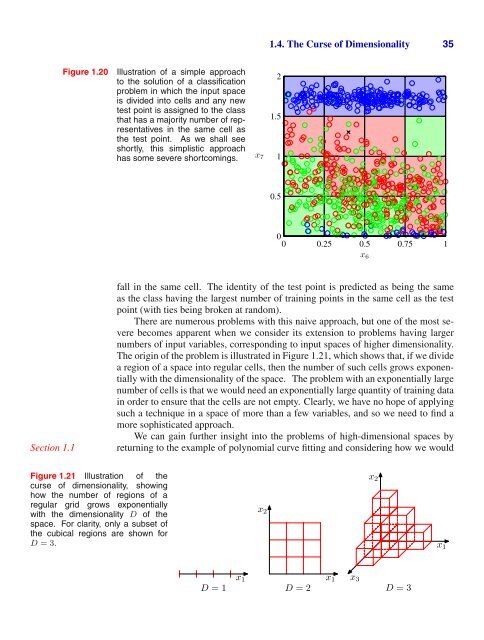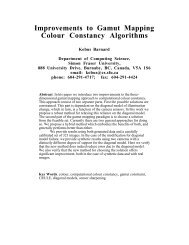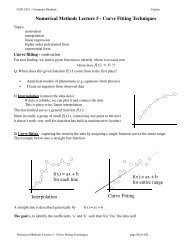1 Introduction
1 Introduction
1 Introduction
- No tags were found...
Create successful ePaper yourself
Turn your PDF publications into a flip-book with our unique Google optimized e-Paper software.
1.4. The Curse of Dimensionality 35Figure 1.20Illustration of a simple approachto the solution of a classificationproblem in which the input spaceis divided into cells and any newtest point is assigned to the classthat has a majority number of representativesin the same cell asthe test point. As we shall seeshortly, this simplistic approachhas some severe shortcomings.21.51x 70 0.25 0.5 0.75 10.50x 6Section 1.1fall in the same cell. The identity of the test point is predicted as being the sameas the class having the largest number of training points in the same cell as the testpoint (with ties being broken at random).There are numerous problems with this naive approach, but one of the most severebecomes apparent when we consider its extension to problems having largernumbers of input variables, corresponding to input spaces of higher dimensionality.The origin of the problem is illustrated in Figure 1.21, which shows that, if we dividea region of a space into regular cells, then the number of such cells grows exponentiallywith the dimensionality of the space. The problem with an exponentially largenumber of cells is that we would need an exponentially large quantity of training datain order to ensure that the cells are not empty. Clearly, we have no hope of applyingsuch a technique in a space of more than a few variables, and so we need to find amore sophisticated approach.We can gain further insight into the problems of high-dimensional spaces byreturning to the example of polynomial curve fitting and considering how we wouldFigure 1.21 Illustration of thecurse of dimensionality, showinghow the number of regions of aregular grid grows exponentiallywith the dimensionality D of thespace. For clarity, only a subset ofthe cubical regions are shown forD =3.x 2x 1x 2D =2D =1x 1x 1x 3D =3





